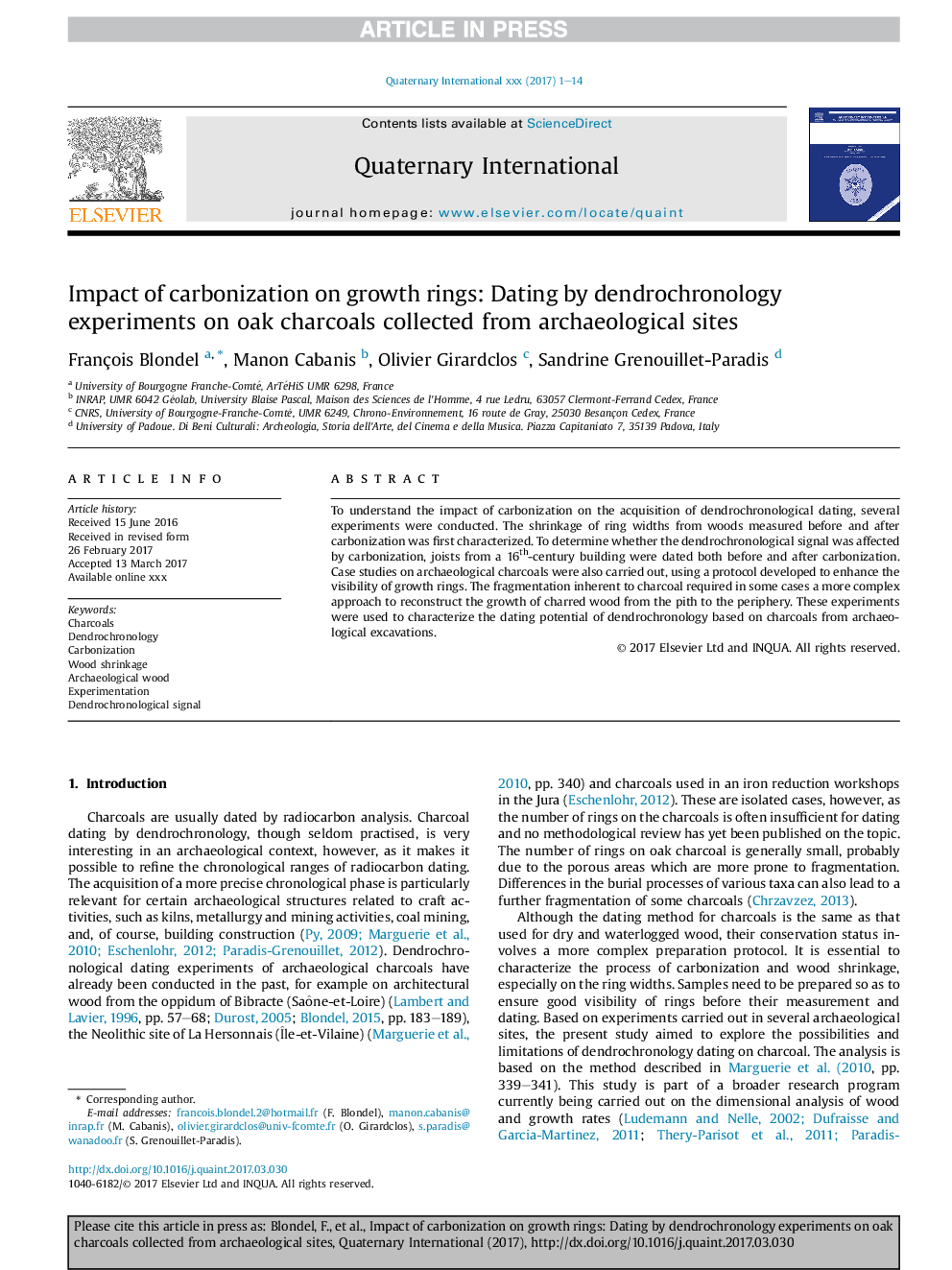| Article ID | Journal | Published Year | Pages | File Type |
|---|---|---|---|---|
| 7451000 | Quaternary International | 2018 | 14 Pages |
Abstract
To understand the impact of carbonization on the acquisition of dendrochronological dating, several experiments were conducted. The shrinkage of ring widths from woods measured before and after carbonization was first characterized. To determine whether the dendrochronological signal was affected by carbonization, joists from a 16th-century building were dated both before and after carbonization. Case studies on archaeological charcoals were also carried out, using a protocol developed to enhance the visibility of growth rings. The fragmentation inherent to charcoal required in some cases a more complex approach to reconstruct the growth of charred wood from the pith to the periphery. These experiments were used to characterize the dating potential of dendrochronology based on charcoals from archaeological excavations.
Related Topics
Physical Sciences and Engineering
Earth and Planetary Sciences
Geology
Authors
François Blondel, Manon Cabanis, Olivier Girardclos, Sandrine Grenouillet-Paradis,
